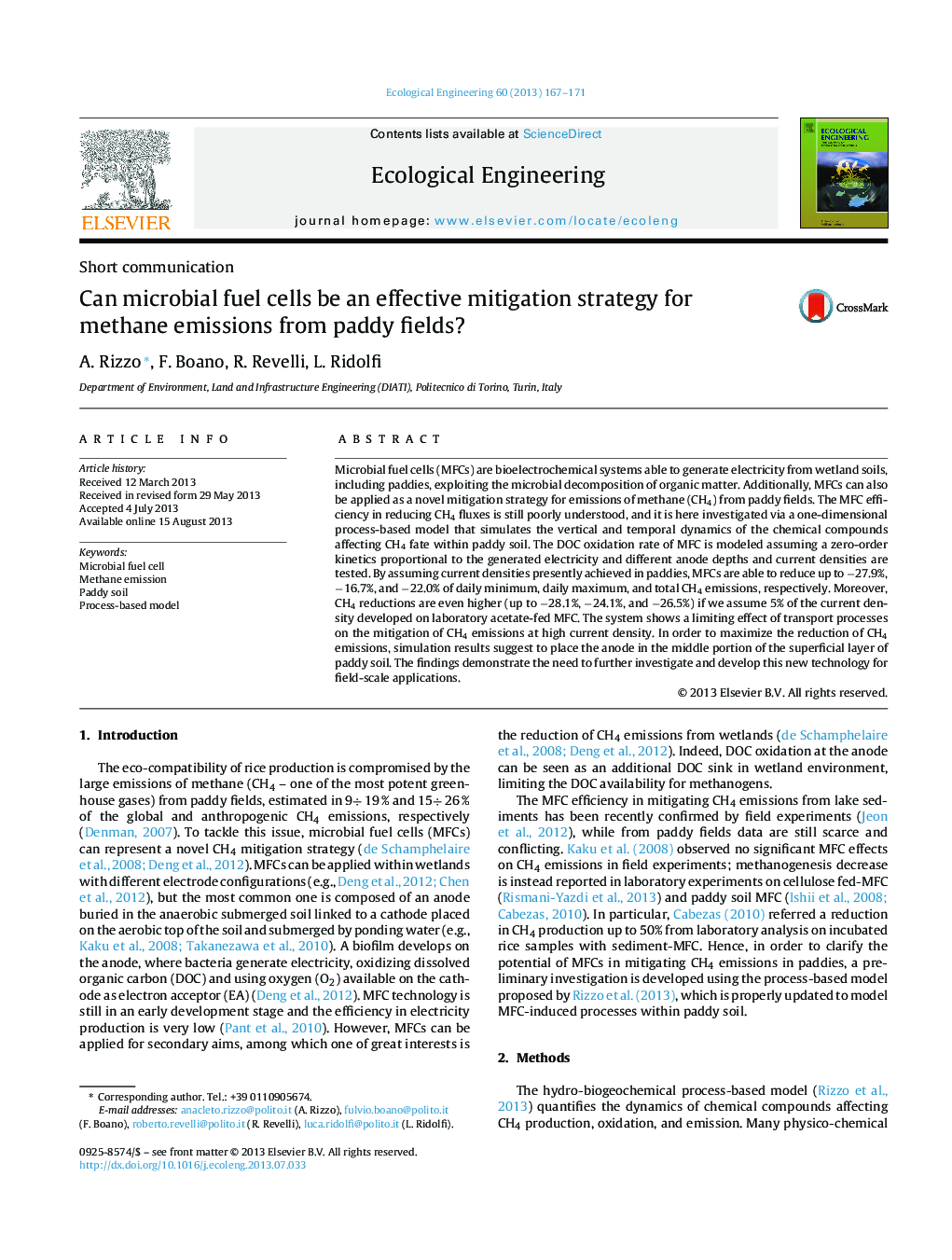| Article ID | Journal | Published Year | Pages | File Type |
|---|---|---|---|---|
| 6302382 | Ecological Engineering | 2013 | 5 Pages |
â¢Microbial fuel cells (MCFs) can generate electricity from paddy soils.â¢MFCs could also reduce methane (CH4) emissions from paddies.â¢MFC ability in reducing CH4 emissions is investigated via a process-based model.â¢Simulation results confirm MFCs as possible novel CH4 mitigation technique.
Microbial fuel cells (MFCs) are bioelectrochemical systems able to generate electricity from wetland soils, including paddies, exploiting the microbial decomposition of organic matter. Additionally, MFCs can also be applied as a novel mitigation strategy for emissions of methane (CH4) from paddy fields. The MFC efficiency in reducing CH4 fluxes is still poorly understood, and it is here investigated via a one-dimensional process-based model that simulates the vertical and temporal dynamics of the chemical compounds affecting CH4 fate within paddy soil. The DOC oxidation rate of MFC is modeled assuming a zero-order kinetics proportional to the generated electricity and different anode depths and current densities are tested. By assuming current densities presently achieved in paddies, MFCs are able to reduce up to â27.9%, â16.7%, and â22.0% of daily minimum, daily maximum, and total CH4 emissions, respectively. Moreover, CH4 reductions are even higher (up to â28.1%, â24.1%, and â26.5%) if we assume 5% of the current density developed on laboratory acetate-fed MFC. The system shows a limiting effect of transport processes on the mitigation of CH4 emissions at high current density. In order to maximize the reduction of CH4 emissions, simulation results suggest to place the anode in the middle portion of the superficial layer of paddy soil. The findings demonstrate the need to further investigate and develop this new technology for field-scale applications.
